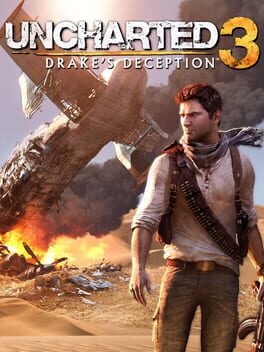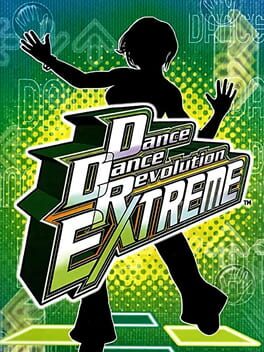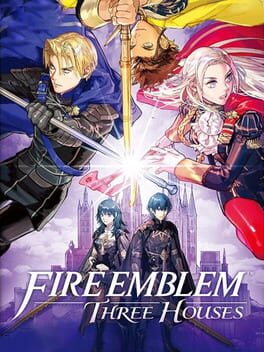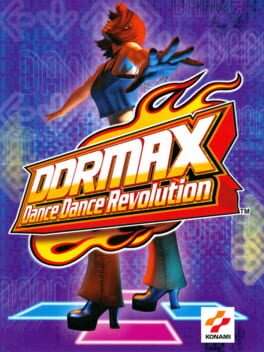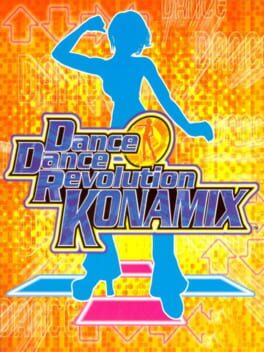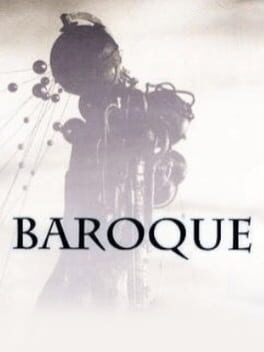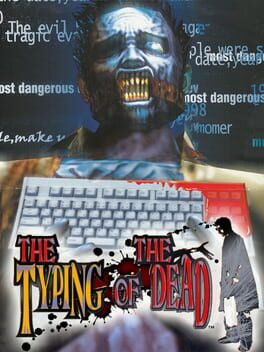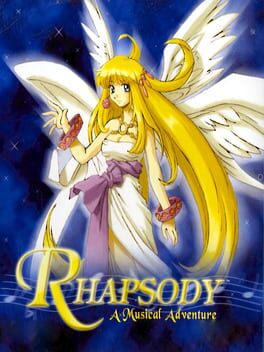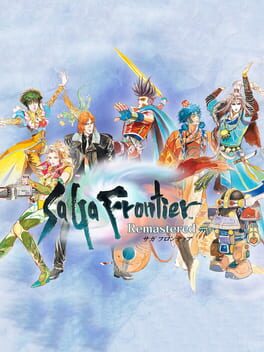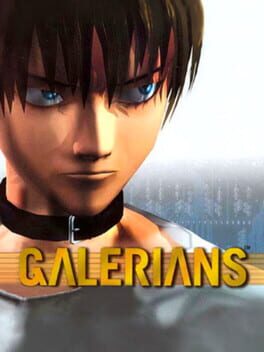epiglottis
2010
Visibly embattled, from its lifeless vestigial third-person combat to its then-unprecedented use of product placement; one can sense the Microsoft execs bristling at the idea of ponying up the big bucks for a video game with a writer protagonist. The lack of confidence on display is only exacerbated by the overexplained cosmology and intertextual references, Remedy tossing fish to clapping seals who may or may not be media-literate enough to recognize a visual cue straight from The Shining. Using obscure collectibles as narrative scaffolding and the cryptic ending at least suggest some measure of interest in letting the player piece the world together themselves, as befitting a game about narrative and mythmaking. The stormy PNW atmosphere is also a major positive tilt for me, and you do have to give it some credit for attempting an unconventional starting point for genre entertainment.
1998
The camera is dogged by every problem that 3D cameras had during this generation AND honks at you like a pervert whenever it refuses to cooperate. Agonizing. This rigidity does enable inspired uses of perspective from time to time, but they're not frequent enough to be worth it.
It would be one thing if the jokes were merely bad; instead, they are bad, repeated ad nauseam, and don't even make sense half the time. "This is like an all-nighter at Richard Simmons' house," Gex quips while in the technology world. What? That is not even a joke; that's saying "Richard Simmons" and hoping someone will laugh. I mostly played this to see if it tapped into its cultural moment in a way that justified its solid sales, but it truly is just a Super Mario 64 clone that feels like it was conceived and orchestrated by someone in the beginning stages of a dissociative disorder. Imagine meeting an unironic Gex fan in the wild. Chilling.
It would be one thing if the jokes were merely bad; instead, they are bad, repeated ad nauseam, and don't even make sense half the time. "This is like an all-nighter at Richard Simmons' house," Gex quips while in the technology world. What? That is not even a joke; that's saying "Richard Simmons" and hoping someone will laugh. I mostly played this to see if it tapped into its cultural moment in a way that justified its solid sales, but it truly is just a Super Mario 64 clone that feels like it was conceived and orchestrated by someone in the beginning stages of a dissociative disorder. Imagine meeting an unironic Gex fan in the wild. Chilling.
Three games in, it is a towering disappointment that Naughty Dog remained so reliant on subpar third-person shooting to fill playtime. For the first installment it's understandable, a way to market an unproven IP, but by this point in the franchise it does nothing but call attention to Uncharted's ludic and narrative limitations. I'm not even averse to gunplay as a matter of principle; I do have an issue when it's nothing but boilerplate seventh-gen cover shooting for three games straight. I see comments about the "improved melee," but unless occasionally tapping Triangle or Circle in between mashing Square constitutes a true improvement, many of you are easily impressed.
The combat also draws attention to one of many great glaring flaws in Uncharted's storytelling: its refusal to acknowledge that Nathan Drake murders about a thousand people per game. The last boss of 2 even tosses off a comment judging him for his bloodthirst so it's not as if the developers are ignorant of this. Many eggheads before me have surely unpacked the moral dimensions of this in greater detail (accompanied by defensive Redditor cope), so I won't bother. But to return to the above issue with the boring-ass gameplay, there's a far better version of this game that encourages more creative ways of dispatching opposition, rather than drawn-out standoffs. Cut the amount of enemies down by 9/10ths and make it so that Nate has to drop beehives on their head, or race them to a doorway where he can lock them out, shit like that. No awkward murder question, more imaginative "setpieces" (which everyone tacitly agrees are the only reason to play these games anyway), less tedious badly-aged filler.
If you're the type who doesn't get hung up on ludonarrative dissonance, it must still be said that 3 is just a badly written game overall. It offers exactly one meaningful dramatic question - "why is Nathan even bothering to do this shit anymore?", posed to him by not one but two characters. He doesn't have a meaningful response either time. At one point toward the end, something major happens to a character that suggests that his actions may actually have consequences... until the game walks it back fifteen minutes later. Cowardice!!! Was Naughty Dog really so afraid of changing the status quo? The paper-thin villains are summarily dispatched, the ending unfolds in an equally predictable fashion, and for the third time in a row, nothing changes, nothing is learned, the game tosses himElizabeth Banks Elena as a consolation prize, and everyone rides off all-smiles into the sunset.
Utter dogshit! An absolute waste of arguably the most visually imaginative Western AAA franchise yet.
The combat also draws attention to one of many great glaring flaws in Uncharted's storytelling: its refusal to acknowledge that Nathan Drake murders about a thousand people per game. The last boss of 2 even tosses off a comment judging him for his bloodthirst so it's not as if the developers are ignorant of this. Many eggheads before me have surely unpacked the moral dimensions of this in greater detail (accompanied by defensive Redditor cope), so I won't bother. But to return to the above issue with the boring-ass gameplay, there's a far better version of this game that encourages more creative ways of dispatching opposition, rather than drawn-out standoffs. Cut the amount of enemies down by 9/10ths and make it so that Nate has to drop beehives on their head, or race them to a doorway where he can lock them out, shit like that. No awkward murder question, more imaginative "setpieces" (which everyone tacitly agrees are the only reason to play these games anyway), less tedious badly-aged filler.
If you're the type who doesn't get hung up on ludonarrative dissonance, it must still be said that 3 is just a badly written game overall. It offers exactly one meaningful dramatic question - "why is Nathan even bothering to do this shit anymore?", posed to him by not one but two characters. He doesn't have a meaningful response either time. At one point toward the end, something major happens to a character that suggests that his actions may actually have consequences... until the game walks it back fifteen minutes later. Cowardice!!! Was Naughty Dog really so afraid of changing the status quo? The paper-thin villains are summarily dispatched, the ending unfolds in an equally predictable fashion, and for the third time in a row, nothing changes, nothing is learned, the game tosses him
Utter dogshit! An absolute waste of arguably the most visually imaginative Western AAA franchise yet.
eHOLE rating: 42% (30/71). This is a review of the NA CS release, although it should be made clear that the arcade release of Extreme is a fabulous game, the franchise's finest hour.
The CS release, however, is ugly as sin, has a marginal tracklist stuffed with lifeless covers of pop hits, and featured a collaboration with Burger King that allowed players to unlock a Paula Terry song. Trash!
Favorite song: Only You. (Also my mom's favorite, so maybe there's some fondness-by-transference happening here.) The death of Francisco Gutierrez, AKA Franky Gee, AKA the face of Captain Jack himself, was the first tragedy to really rock Bemani. Captain Jack had more personality than just about any other licensed artist in DDR, and though his music didn't often hit for me, Only You was the outlier that stole my heart. The fakey doo-wop chord progression and background vocals in the chorus are just too sweet for me to deny. All the hoochie mamas throw your hands up!!!
The CS release, however, is ugly as sin, has a marginal tracklist stuffed with lifeless covers of pop hits, and featured a collaboration with Burger King that allowed players to unlock a Paula Terry song. Trash!
Favorite song: Only You. (Also my mom's favorite, so maybe there's some fondness-by-transference happening here.) The death of Francisco Gutierrez, AKA Franky Gee, AKA the face of Captain Jack himself, was the first tragedy to really rock Bemani. Captain Jack had more personality than just about any other licensed artist in DDR, and though his music didn't often hit for me, Only You was the outlier that stole my heart. The fakey doo-wop chord progression and background vocals in the chorus are just too sweet for me to deny. All the hoochie mamas throw your hands up!!!
Pretty patently the best cast of any Fire Emblem game, but then how could it not be? The life-skills social simulator structure allows for unprecedented access to your eager little students: a tea party, a meal in the dining hall, the little notes they leave in the confessional box, impromptu choir practices, and support conversations, my God so many fucking support conversations. Much to do with these blushing moe blobs, not the least of which is working through reliable fantasy chestnuts like class anxiety and religious dogma, all against the ever-palatable school days backdrop. They provide easy access points for understanding the geopolitics at play, fleshing out the setting without an excess of jargon, and when the game eventually stakes its political partisan line they effectively rationalize the silent protagonist's choice of side. I found a lot to dig into and appreciate and I only played one house! When people talk about putting 300, 400 hours into this game, I almost understand them...
...until I start thinking about the gameplay. I play Fire Emblem games for the first time on Normal to get a lay of the land and generally they keep me on my toes without being too dirty or frustrating. Three Houses, however, is remedial, an absolute bore past the first few chapters. You are given an obscene amount of opportunities to accrue tools and buffs specifically tailored to your units; weapons are plentiful and can be repaired on the cheap; and if for some baffling reason you've managed to fuck up all of your students' builds, the game gives you nice little prebuilt units in the second half, some of which are among the game's best. By the time IS starts throwing actual danger at you in the last five hours of the game, you've accrued so many Divine Pulses that there is never any real danger of putting a toe out of line and losing a character, let alone control of the overall situation. Maybe Maddening requires a little bit more gray matter but somehow I doubt it. The emphasis on character development and edge-free gameplay has a pretty obvious motivation: this is as beginner-friendly as the franchise will ever get, an official shift to courting the ravenous fandom kiddies, and the high sales reflect that. It's just unfortunate that the actual gameplay has to be so half-assed as a consequence.
...until I start thinking about the gameplay. I play Fire Emblem games for the first time on Normal to get a lay of the land and generally they keep me on my toes without being too dirty or frustrating. Three Houses, however, is remedial, an absolute bore past the first few chapters. You are given an obscene amount of opportunities to accrue tools and buffs specifically tailored to your units; weapons are plentiful and can be repaired on the cheap; and if for some baffling reason you've managed to fuck up all of your students' builds, the game gives you nice little prebuilt units in the second half, some of which are among the game's best. By the time IS starts throwing actual danger at you in the last five hours of the game, you've accrued so many Divine Pulses that there is never any real danger of putting a toe out of line and losing a character, let alone control of the overall situation. Maybe Maddening requires a little bit more gray matter but somehow I doubt it. The emphasis on character development and edge-free gameplay has a pretty obvious motivation: this is as beginner-friendly as the franchise will ever get, an official shift to courting the ravenous fandom kiddies, and the high sales reflect that. It's just unfortunate that the actual gameplay has to be so half-assed as a consequence.
eHOLE rating: 52% (36/69). This is a review of the NA CS release.
This release saw the franchise inching ever closer to a bid at mainstream commercial respectability; although many of the new licenses still remained techno-adjacent (with Get Down Tonight the sole outlier), they all did time on the Billboard Hot 100 or at least the offshoot dance chart. It was, of course, a fool's errand - there is no way to look respectable while playing Dance Dance Revolution, and not especially when playing a mix that includes The Whistle Song.
Favorite song: xenon. Yes, this is an incredibly basic-bitch pick, but once in a blue moon things get popular because they deserve to. Konami knew what they were doing putting this and Kakumei (a close second) at the very end of the unlockables list. This sort of manic chiptune didn't feel nearly as overexposed in 2002 as it does twenty years out; in its time, it felt like the ultimate realization of a track from one of the metropolitan Sonic the Hedgehog levels, slinky and funky and propulsive but with the added kind of big bass that the Genesis never could have dreamed of.
Fun Fact: Forever Sunshine, the corniest song in DDR and perhaps of all time, was composed by Castlevania mainstay Michiru Yamane.
This release saw the franchise inching ever closer to a bid at mainstream commercial respectability; although many of the new licenses still remained techno-adjacent (with Get Down Tonight the sole outlier), they all did time on the Billboard Hot 100 or at least the offshoot dance chart. It was, of course, a fool's errand - there is no way to look respectable while playing Dance Dance Revolution, and not especially when playing a mix that includes The Whistle Song.
Favorite song: xenon. Yes, this is an incredibly basic-bitch pick, but once in a blue moon things get popular because they deserve to. Konami knew what they were doing putting this and Kakumei (a close second) at the very end of the unlockables list. This sort of manic chiptune didn't feel nearly as overexposed in 2002 as it does twenty years out; in its time, it felt like the ultimate realization of a track from one of the metropolitan Sonic the Hedgehog levels, slinky and funky and propulsive but with the added kind of big bass that the Genesis never could have dreamed of.
Fun Fact: Forever Sunshine, the corniest song in DDR and perhaps of all time, was composed by Castlevania mainstay Michiru Yamane.
eHOLE rating: 58% (41/71)
This mix includes both Sandstorm and I Like to Move It, which gives it a higher meme quotient than any other NA home release on record.
Favorite song: INSERTiON. The grand tragedy of Naoki Maeda is that, despite having a larger fingerprint on Bemani than any of Konami's other in-house musicians, nearly all the DDR music he attached his name to and thus became widely known for was awful. This primarily applies to his "Eurobeat," which he ALWAYS seemed to claim credit for and which is as repetitive and lifeless as anything calling itself dance music could ever be. His trance, however, is pretty solid, and in cases like INSERTiON sometimes quite good. I like the dark rumbling bass, the dramatic jangly piano, and the way the synths come roaring back in at the end of the song after the slowdown. It's got atmosphere! The stepchart is also quite unique, super messy and full of dumb tempo changes but possessed of its own internal logic. A really fun cata (that's a 9-difficulty song, youngins!) that does something with the rating besides just nonstop stream.
This mix includes both Sandstorm and I Like to Move It, which gives it a higher meme quotient than any other NA home release on record.
Favorite song: INSERTiON. The grand tragedy of Naoki Maeda is that, despite having a larger fingerprint on Bemani than any of Konami's other in-house musicians, nearly all the DDR music he attached his name to and thus became widely known for was awful. This primarily applies to his "Eurobeat," which he ALWAYS seemed to claim credit for and which is as repetitive and lifeless as anything calling itself dance music could ever be. His trance, however, is pretty solid, and in cases like INSERTiON sometimes quite good. I like the dark rumbling bass, the dramatic jangly piano, and the way the synths come roaring back in at the end of the song after the slowdown. It's got atmosphere! The stepchart is also quite unique, super messy and full of dumb tempo changes but possessed of its own internal logic. A really fun cata (that's a 9-difficulty song, youngins!) that does something with the rating besides just nonstop stream.
Last month my brother got a free DDR pad at his work, hurling us straight back into an obsession we thought we'd put to rest fifteen years ago. This kind of high-impact exercise is harder on my body than it was in my dainty adolescent twink years, but the cardio feels great and I'm glad to have an excuse to work up a sweat.
The real pleasure, though, has been the chance to reacquaint myself with the music. DDR radically shaped my musical tastes as a youth, for better and mostly worse, but even as a manic happy hardcore junkie I still kept an open mind to the rest of the franchise's massive library, if only for the stepcharts. In my wiser, mellower adulthood, I have come to rebuke the false messiah Jenny Rom and turn toward the riches of TaQ and dj nagureo and Slake. The flashy Dancemania stuff often overshadowed the wealth of electronica that Konami's musicians cranked out for the better part of a decade, so it's nice to have a release like Konamix that highlights their contributions, even if that's just a result of licensing issues.
And really, aside from framerate, the only thing differentiating one DDR from another is their songlists (or a bunch of ancillary game modes that no one gives a shit about), so one I can get behind counts for a lot! Based on the metric I developed for evaluating these song lists, epiglottis' Highly Objective Library Evaluation (henceforth eHOLE), Konamix scores a 58% with 30 of the 52 songs being listenable, fun to dance to, or ideally both. More hits than misses, tons of funky-ass Club Mix stuff, Paula Terry only gets exhumed from her wicked sepulcher once... at this point the CS releases were still content with being niche and weird rather than trying to land a big normie audience and I'm thankful for that!
Favorite song: patsenner. THE WOODBLOCK! Come on!!!
The real pleasure, though, has been the chance to reacquaint myself with the music. DDR radically shaped my musical tastes as a youth, for better and mostly worse, but even as a manic happy hardcore junkie I still kept an open mind to the rest of the franchise's massive library, if only for the stepcharts. In my wiser, mellower adulthood, I have come to rebuke the false messiah Jenny Rom and turn toward the riches of TaQ and dj nagureo and Slake. The flashy Dancemania stuff often overshadowed the wealth of electronica that Konami's musicians cranked out for the better part of a decade, so it's nice to have a release like Konamix that highlights their contributions, even if that's just a result of licensing issues.
And really, aside from framerate, the only thing differentiating one DDR from another is their songlists (or a bunch of ancillary game modes that no one gives a shit about), so one I can get behind counts for a lot! Based on the metric I developed for evaluating these song lists, epiglottis' Highly Objective Library Evaluation (henceforth eHOLE), Konamix scores a 58% with 30 of the 52 songs being listenable, fun to dance to, or ideally both. More hits than misses, tons of funky-ass Club Mix stuff, Paula Terry only gets exhumed from her wicked sepulcher once... at this point the CS releases were still content with being niche and weird rather than trying to land a big normie audience and I'm thankful for that!
Favorite song: patsenner. THE WOODBLOCK! Come on!!!
1998
Its bonafides as a singular artistic work are overstated, but there's certainly a lot more going on here than most other emulation fetish objects. Systemically the game doesn't do anything new, and despite its oppressive atmosphere, it's actually quite easy, presumably to sustain the narrative momentum. To that end, the added floors in the PS1 port are misjudged, contributing nothing to the difficulty and padding the length of each run. Its true successes emerge with each strange new bit of exposition, and although the slowly unfolding compendium of lore is not a unique storytelling strategy for roguelikes, here they are so often tucked away behind obscure flags and cryptic elision that there's a legitimate sense of mystery and discovery. Knowledge of this world feels deliberate and well-earned, rather than merely random or incidental.
If you enjoyed this, I recommend watching Evil Dead Trap, Malice@Doll, or Riget (the latter of which Yonemitsu cites as an influence).
If you enjoyed this, I recommend watching Evil Dead Trap, Malice@Doll, or Riget (the latter of which Yonemitsu cites as an influence).
Watched my partner, who loves musicals but has never gotten through more than 15 minutes of a JRPG in his life, play about 75% of this, and took the reins when he got bored of the repetitive dungeons or didn't know where to go. Neither of those issues are his fault: every other flaw in this game is forgivable if glaring, but the mapless asset-flip dungeon slogs and poorly signposted objectives are major disservices to its intended demographic.
The extent to which a player might forgive these issues is directly linked to how susceptible they are to 90s anime humor, cheeky Working Designs-style translations, and pureheartedness bordering on the saccharine. For my part, I'm an easy mark for a music box melody, and in the end that's all Rhapsody really is.
The extent to which a player might forgive these issues is directly linked to how susceptible they are to 90s anime humor, cheeky Working Designs-style translations, and pureheartedness bordering on the saccharine. For my part, I'm an easy mark for a music box melody, and in the end that's all Rhapsody really is.
1994
This is the first visual novel I've ever played in Japanese. It was a challenge and I'm really proud of myself! I won't claim to have caught each and every nuance, but I understood all of the endings and the general cause and effect that led to them. What follows are some off-the-cuff reflections. I try not to center myself when writing about other people's art, but since so much of my experience with this was colored by my language learning process, it's kind of unavoidable here.
I quickly realized that this would be a great choice for me as an intermediate Japanese learner: because the scenario is relatively grounded, it's written in natural, unstylized language, unlike what you'd find in a JRPG or even other genre-inflected VNs. At the same time, though, it's not the stilted, repetitive prose I often see in guided readers or other texts for people at my level. There's a vested interest in making these characters sound like characters and in developing an organic internal monologue for Toru. Between that and the context clues granted by the sound and visuals, I was able to work outward from the main idea in numerous sentences to translate unfamiliar phrases or constructions based on my understanding of the storytelling. Finally, there's nothing too complex or esoteric going on with the story or most of the characters - just good, meat-and-potatoes crime thriller writing - and it's not a long VN. It would probably take a native reader about five hours to get all the canon endings.it took me ten times as long lmao
My method at the beginning was to read a few sentences, watch this Japanese playthrough to help me look up unfamiliar kanji without radical-hunting on Jisho, then check my work with this English translation. Both of these playthroughs make a beeline to the true ending almost immediately, however, and if you know anything about visual novels, you know that much of the fun and intrigue comes from stumbling through some of the bad endings first. So I forewent my crutches and braved all eight of the "failures" alone.
Although I struggled at first, and both my self-doubt and my time spent digging through Jisho increased significantly, this was the right choice. In VN tradition, I barreled headlong into the grimmest of the grim endings and was struck by the game's eerie hopelessness. Toru, your typical goofy hornt-up VN teen hero, flails around desperately trying to make sense of the situation, growing more paranoid, angry, and violent with each error he steps into. A scene in particular that landed for me was when one character is murdered and another, who seemingly had little interest in or connection to them, is overcome with anger and sadness, and Toru has a disorienting psychic episode where he realizes that he doesn't actually know anything about any of these people.¹ It's an intriguing moment for both characters made moreso by the VN's visual and musical accompaniments. Although the character silhouettes and the muted photographic backgrounds are beautiful, the music is really where this game shines. You lose out on A LOT of this if you go straight to the good endings; you don't even learn the murderer's motives. And though I had accepted early on that I would never be able to figure out who the killer was on my own, there's simply no way to do it without finding clues in the bad endings first unless you guess luckily or cheat.
After my first ending, I had a difficult time finding the others. I wasn't always confident about what I had previously read and needed to do differently, and the UI doesn't make it much easier, so I switched from the SNES version to the PSX. They are fundamentally similar (the PSX music isn't as good, too fussed-with maybe?), but the PSX has a flowchart. Blessed be! Seeing it all laid out as I worked through the rest, each little module linked together, really drove home how unlike Kamaitachi no Yoru was from anything else on the SNES in terms of atmosphere, subject matter, and narrative structure. Its influence is undeniable; the game was a big commercial hit, and both Ryukishi07 and Kotaro Uchikoshi² have acknowledged its impact on their work. It's been a white whale for me for a long time - I first read about it maybe twenty years ago - and the experience still surpassed my expectations. To enjoy something so dark and rich and see how plainly it influenced other works that are important to me was a true privilege and made me so excited about this medium's bountiful history!
TL;DR get you a girl who can perfectly execute a one-armed shoulder throw in a time of crisis.
¹Granted, this is my interpretation, based on my shaky Japanese. If it's wrong, feel free to embarrass me in the comments. <3
²One part of this presentation a few minutes earlier, where Uchikoshi talks about how Kamaitachi no Yoru "plants its flags in the player's memory," is especially interesting given the roles Sigma and Phi serve in Virtue's Last Reward, but he keeps the connection a bit broad, presumably to avoid spoilers. Also, listen to this bop and try to tell me that Shinji Hosoe isn't a fan too.
I quickly realized that this would be a great choice for me as an intermediate Japanese learner: because the scenario is relatively grounded, it's written in natural, unstylized language, unlike what you'd find in a JRPG or even other genre-inflected VNs. At the same time, though, it's not the stilted, repetitive prose I often see in guided readers or other texts for people at my level. There's a vested interest in making these characters sound like characters and in developing an organic internal monologue for Toru. Between that and the context clues granted by the sound and visuals, I was able to work outward from the main idea in numerous sentences to translate unfamiliar phrases or constructions based on my understanding of the storytelling. Finally, there's nothing too complex or esoteric going on with the story or most of the characters - just good, meat-and-potatoes crime thriller writing - and it's not a long VN. It would probably take a native reader about five hours to get all the canon endings.
My method at the beginning was to read a few sentences, watch this Japanese playthrough to help me look up unfamiliar kanji without radical-hunting on Jisho, then check my work with this English translation. Both of these playthroughs make a beeline to the true ending almost immediately, however, and if you know anything about visual novels, you know that much of the fun and intrigue comes from stumbling through some of the bad endings first. So I forewent my crutches and braved all eight of the "failures" alone.
Although I struggled at first, and both my self-doubt and my time spent digging through Jisho increased significantly, this was the right choice. In VN tradition, I barreled headlong into the grimmest of the grim endings and was struck by the game's eerie hopelessness. Toru, your typical goofy hornt-up VN teen hero, flails around desperately trying to make sense of the situation, growing more paranoid, angry, and violent with each error he steps into. A scene in particular that landed for me was when one character is murdered and another, who seemingly had little interest in or connection to them, is overcome with anger and sadness, and Toru has a disorienting psychic episode where he realizes that he doesn't actually know anything about any of these people.¹ It's an intriguing moment for both characters made moreso by the VN's visual and musical accompaniments. Although the character silhouettes and the muted photographic backgrounds are beautiful, the music is really where this game shines. You lose out on A LOT of this if you go straight to the good endings; you don't even learn the murderer's motives. And though I had accepted early on that I would never be able to figure out who the killer was on my own, there's simply no way to do it without finding clues in the bad endings first unless you guess luckily or cheat.
After my first ending, I had a difficult time finding the others. I wasn't always confident about what I had previously read and needed to do differently, and the UI doesn't make it much easier, so I switched from the SNES version to the PSX. They are fundamentally similar (the PSX music isn't as good, too fussed-with maybe?), but the PSX has a flowchart. Blessed be! Seeing it all laid out as I worked through the rest, each little module linked together, really drove home how unlike Kamaitachi no Yoru was from anything else on the SNES in terms of atmosphere, subject matter, and narrative structure. Its influence is undeniable; the game was a big commercial hit, and both Ryukishi07 and Kotaro Uchikoshi² have acknowledged its impact on their work. It's been a white whale for me for a long time - I first read about it maybe twenty years ago - and the experience still surpassed my expectations. To enjoy something so dark and rich and see how plainly it influenced other works that are important to me was a true privilege and made me so excited about this medium's bountiful history!
TL;DR get you a girl who can perfectly execute a one-armed shoulder throw in a time of crisis.
¹Granted, this is my interpretation, based on my shaky Japanese. If it's wrong, feel free to embarrass me in the comments. <3
²One part of this presentation a few minutes earlier, where Uchikoshi talks about how Kamaitachi no Yoru "plants its flags in the player's memory," is especially interesting given the roles Sigma and Phi serve in Virtue's Last Reward, but he keeps the connection a bit broad, presumably to avoid spoilers. Also, listen to this bop and try to tell me that Shinji Hosoe isn't a fan too.
After fiddling with this game on and off to little success in my teens, I found an approach that worked for me: pick it up once every three years or so, beat one scenario, and put it down. This keeps me from burning out on the relatively slim amount of content (i.e. torturing myself with back-to-back Rune quest runs) and preserves the mystique of the intricate mechanics, the postmodernist style mashup, the cryptic staccato dialogue, all the stuff that makes Frontier special. The only character I have left is... Riki. (I doubt I'll play Fuse, since I've cleared four of the other characters on different platforms and I don't much feel like doing it again.)
Anyway, Lute blows, but everyone knew that already. See you in 2026!
Anyway, Lute blows, but everyone knew that already. See you in 2026!
2001
1999
Has a good grasp on the fusion of biohorror and Gothic gloom that made Resident Evil so unique and leverages that to attempt more emotional and thematic ambition than its B-movie inspiration. Flirts juuust enough with "chuunibyou mommy issues" that it's all the more satisfying when the game ultimately refuses the player-by-proxy power fantasy. It's schematic - one level to establish the tone, one to generate a human core, one to flesh out the setting, and one to tie it all with a neat little bow - but that keeps it focused even when it's indulging in the kind of conceptual excess that Resident Evil rarely allowed itself. Babylon Hotel didn't have to be populated with a bunch of freaks, but I'm glad it was.
The tank controls and janky survival horror combat are to be expected, but what I really can't countenance are the boss fights. Damage sponges with minuscule vulnerability windows, every one of them! Seriously, how many survival horror bosses have ever been good? I can think of maybe three that are even tolerable.
The tank controls and janky survival horror combat are to be expected, but what I really can't countenance are the boss fights. Damage sponges with minuscule vulnerability windows, every one of them! Seriously, how many survival horror bosses have ever been good? I can think of maybe three that are even tolerable.


